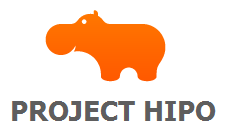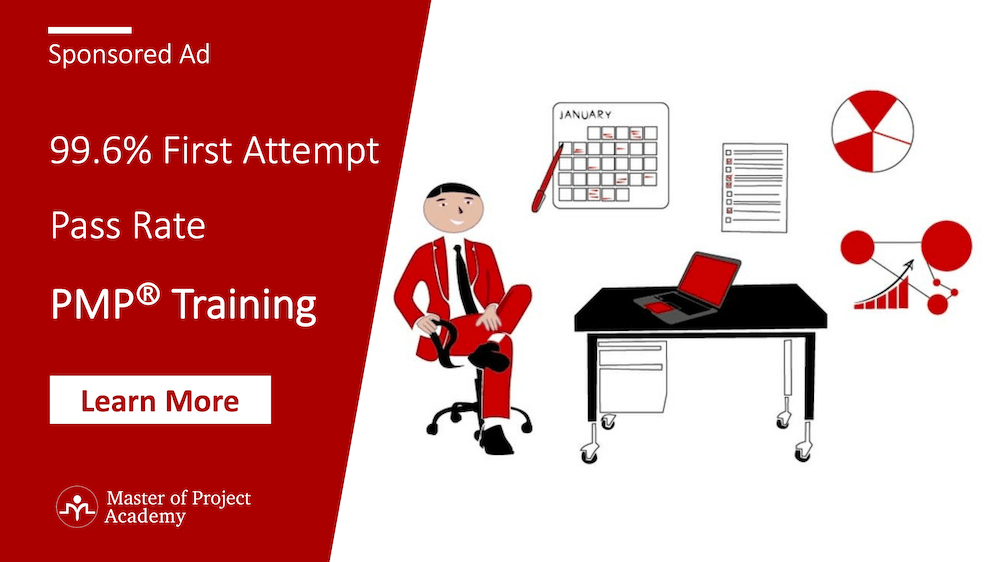Are you a project manager who is planning to prepare for PMP certification? Or are you an entry-level professional who wants to advance his career by attaining PMP certification? If yes then you must be looking for the best preparation books for the PMP exam. There are a lot of preparation books used for the PMP exam. But PMBOK PDF is considered as the main reference book recommended by the Project Management Institute i.e. PMI. Hence in this article, we will provide all the details related to PMBOK PDF such as content, importance, latest edition, salient features, how to download it, etc. This will help you to get an overview of PMBOK PDF.
First, let us understand what is PMP exam.
What is the PMP Exam?
Project Management Professional (PMP) Certification is the most renowned, significant and industry-recognized certification for project managers. PMP certification is truly global i.e. once you become PMP certified, you can work virtually in any industry, any location, using any methodology irrespective of any geography or domain.
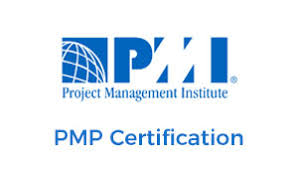
PMP Certification benefits employees as well as employers. In regard to employee salary, PMP certified individuals garner a higher salary (20% higher on average) than non-certified individuals. And, in regard to employers, in the organizations having more than 1/3 of PMP certified project managers; more of the projects get completed on time, on budget and meeting original goals.
PMP Certification signifies that PMP certified individuals speak and understand the global language of project management. Furthermore, PMP Certification associates you to a community of professionals, organizations, and experts around the world.
To achieve PMP certification, one needs to appear for the PMP exam. And Project Management Institute (PMI) is the world’s largest not for profit membership association for the project management profession. PMI introduced the PMP examination to achieve PMP certification.
Prerequisites to appear for PMP examination are:
| S.No | Education Requirement | Experience of leading and directing projects | 35 Contact Hours |
| 1 | 4-year degree | 3 years leading the project with 4500 Hours | 35 Hours of project management education/training |
| 2 | Secondary degree i.e. High School Diploma or global equivalent | 5 years leading the project with 7500 hours |
You can read more in our PMP certification requirements post.
PMP Exam consists of 200 multiple-choice questions. The duration is 4 hours. This is a computer-based exam conducted in Prometric centers.
PMBOK PDF is the outline of the PMP exam and PMP materials are prepared with the help of PMBOK PDF Guide.
What is the PMBOK PDF?
“A Guide to the Project Management Body of Knowledge” i.e. PMBOK Guide documents the standards and best practices for the field of project management. The main aim of the PMBOK PDF Guide is to provide a common language to discuss the project management profession.
PMBOK 6 Edition identifies 10 knowledge areas and 5 process groups that the project manager needs to focus on during the course of a project. Because such information can be of great significance to project managers to help them determine how to make use of resources in the most effective manner.
Generally, Project Managers have limited time to perform all things required by the PMBOK PDF Guide. Hence, they choose to perform those knowledge areas which are quite familiar to them or easy to perform or supported by most frequently used tools. As a result, some knowledge areas which have a high impact on project success get missed out.

It is true that each knowledge area has varying impacts on project success in different industries. However, to manage the project successfully, you need to know the importance of 10 knowledge areas in PMBOK and rank the importance level of each knowledge area.
PMBOK PDF Guide does not identify the relative importance of each knowledge area. Therefore an individual needs to extract this information from PMBOK Guide. Further, this information will help project managers in decision making in regard to the manner in which time and resources are allocated among different knowledge areas and associated processes.
In short, the PMBOK PDF Guide contains proven traditional practices that are generally exercised as well as innovative emerging practices for the profession with widespread consensus to their value and use.
Importance of PMBOK PDF
It is valuable not only for the organization but also for employees for the following reasons:
1. First of all, it allows companies to standardize the practices or processes across the departments. For instance: Employees working in the development of the project will manage the project in a similar way to the ones working in the finance department.
2. Secondly, the PMBOK PDF Guide is helpful to project managers to work with the standardized system across the organization.
3. Thirdly, PMBOK PDF discusses what is practical to implement in the real project scenario. Besides, it also guides what doesn’t work in a real project. Hence, it reduces the chances of project failure.
4. Next is for those experienced project managers who are familiar with PMBOK content can tailor processes to suit their project and meet the organization’s needs.
5. Last but not least, PMBOK PDF documents the methods that can guide an entry-level professional on how to manage procurement or risk management in a project.
PMBOK Knowledge Areas
Project Management as a practice is spreading worldwide rapidly. It is considered as a recognized and strategic career path, competency and a valuable subject for education purposes. PMBOK framework consists of 5 Process Groups and 10 Knowledge Areas encompassing 49 Processes.
Processes are grouped into either 5 Process Management Process Groups or categorized by 10 Knowledge areas.
Knowledge area is defined as an area of project management defined by its knowledge requirement. It is described in terms of its component processes, practices, inputs, outputs, tools, and techniques. Here Knowledge Areas group the Project management processes by subject area like Scope, Cost, Schedule, Quality, Risk, etc.
These knowledge areas are interrelated but they are defined separately from the project management perspective. Additionally, these knowledge areas are used in the project most of the time.
10 Knowledge Areas Defined in PMBOK PDF Guide
1. Project Integration Management
This knowledge area in PMBOK PDF brings all of the process groups together. It basically pulls all the pieces of a project together into a cohesive whole. Here, the project manager integrates the work of everyone on the team through all of these major activities to keep the project on track. Activities include:
- The project being authorized by the project charter to control the budget and assign resources
- Plan all of the work that’s going to happen throughout the project
- Direct the work once it gets started
- Monitor the way the work progresses and looking for potential problems
- Look out for changes; understand their impacts and making sure they don’t derail the project.
- Close the project and making sure that there are no loose ends when it’s over.
2. Project Scope Management
This knowledge area in PMBOK PDF defines what work is required and then making sure all of that work and only that work is completed. Activities include:
- Develop a plan for planning, validating and controlling scope and requirements on the project
- Determine all the requirements that support the project’s business case defined in the project charter
- Sort and balancing the needs of stakeholders to determine the scope
- Create a WBS to break the scope down to smaller, manageable pieces and define them in WBS dictionary
- Get the signed acceptance that completed the scope of work is acceptable to the customer or sponsor
- Measure the scope performance and adjust as needed
3. Project Schedule Management
This knowledge area in PMBOK PDF is about breaking the work down into activities so you can put them in order and come up with estimates for each of them. It makes sure that all of the work happens in the right order, gets done by the right people and doesn’t take too long. This knowledge area defines how deadlines are set and met. First, it figures out what work you need to do, how you will do it, what resources you will use, and how long it will take. Then it talks about how to develop and control the schedule. Activities include:
- Define a process you will use to plan, develop, manage, execute and control the schedule
- Identify the list of all of the activities to complete to produce the project deliverables.
- Figure out which activities need to come before the others and put them in the right order
- Estimate the number of time periods needed to complete an individual activity with estimated resources
- Build a schedule from activity sequences, durations, resource requirements, and schedule constraints.
- Monitor the status of the project and control changes to the schedule baseline to make sure that it is kept up to date
4. Project Cost Management
This knowledge area in PMBOK PDF involves planning, estimating, budgeting, financing, funding, managing and controlling costs. This helps in completing the project within the approved budget. It is irrespective of project size whether it is small or big, how many resources and activities are in it, the process of figuring out the budget remains the same. Activities include:
- Define a process of how the project costs will be planned i.e estimated and budgeted, managed, monitored and controlled
- Identify the cost estimates for all the project activities and resources needed to complete the project work
- Determine the total cost of the project to figure out the number of funds the organization needs to have available for the project
- Monitor the status of the project to update the project costs and manages the changes to the cost baseline.
5. Project Quality Management
This knowledge area in PMBOK involves creating and following organization policies, procedures and tailoring them to ensure the project meets the needs of the customer. It ensures that a project is completed in compliance with the project requirements. Activities include:
- Identify all relevant organization or industry practices, standards and requirements for the quality of the project, product of the project and project management efforts and plan to meet those quality standards and requirements.
- Ensure that the project work, processes followed and deliverables produced conform to the quality management plan
- Ensure a certain level of quality in a deliverable. The deliverable can be a product, service or result.
- Formulate a process to ensure customer acceptance. It involves confirming and documenting the achievement of agreed-upon requirements.
6. Project Resource Management
This knowledge area in PMBOK involves identifying, acquiring and managing the resources needed for the successful completion of the project. Here, resources refer to not only human resources but also encompass the facilities, material or physical resources, equipment required to perform the work of the project. It ensures that the right resources will be available to the project manager and project team at the right time and place. Activities include:
- Define a plan to encompass the management of human resources as well as physical resources
- Determine the type and quantity of all the resources (human resources, equipment or material) needed to complete the project work
- Ensure to follow the resource management plan to secure the human and physical resources needed for the project
- Work towards to improve competencies, create a conducive environment to build trust and cooperation and team member interaction to enhance project performance. It is ongoing throughout the project work
- Track the performance of team members, providing feedback, resolving issues and managing team changes to optimize project performance. This process includes day to day management activities done by a project manager
- The project manager needs to ensure that the physical resources assigned to the project are available when required in the right place and the right quantity
7. Project Communications Management
This knowledge area in PMBOK PDF is about keeping everybody in the loop. That means it involves everyone talking about the work done so that they all stay on the same page. Hence, everyone has information they need to resolve any issues and keep the project moving forward. It involves developing a strategy to make sure that communication is effective for stakeholders. Next is carrying out the activities necessary to implement the communication strategy. Activities include:
- Develop a process to plan for project communication activities based on the information needs of stakeholders and needs of the project
- Ensure that information is flowing back and forth on the project in accordance with the communications management plan
- To make sure that the communication needs of stakeholders are met through the distribution of communication artifacts
- The project manager and team assess how communication is going throughout the project. It ensures that information is flowing as planned to keep stakeholders informed and maintain the desired levels of stakeholder engagement.
8. Project Risk Management
This knowledge area in PMBOK PDF involves processes to plan risk management, identification, analysis, response planning, implementation and monitoring risk on a project. The objective of this knowledge area is to increase the probability and impact of positive risks, decrease the probability and impact of negative risks in order to increase the chances of project success. Activities include:
- Define a process to plan risk management activities for a project
- Identify individual project risks, sources, and characteristics of overall project risk
- Analyze the risks by assessing the probability of occurrence and potential impact on the project and prioritize the individual risks.
- Numerically analyze the probability and impact of risk that ranked highest in qualitative risk analysis. It will help to look at how risks could affect the objectives of the project, determine which risk event warrant a response and to determine overall project risk
- Figure out the ways to reduce or eliminate threats, to make opportunities more likely or increase their impact.
- Implement the agreed-upon risk plans
- Monitor the implemented risk response plans, track identified risks, identify and analyze new risks, evaluate risk process effectiveness throughout the project.
9. Project Procurement Management
This knowledge area in PMBOK involves the purchase or acquires products, service or results needed from outside the project team. Activities include:
- Document the project procurement decisions such as performing make or buy analysis, specify the approach and identify the potential sellers
- Obtain the bid documents, to prospective sellers, answer the seller’s questions, receive and evaluate sellers responses, select the seller and award the contract
- Manage the procurement relationships between buyer and seller, monitor the contract performance making sure that both parties perform according to the contract, making changes and corrections and closing out the contracts once it is completed or terminated.
10. Project Stakeholder Management
This knowledge area in PMBOK involves figuring out who your stakeholders are, plan how you will keep them engaged and manage your project to keep them satisfied. Note that engaging stakeholders should take place throughout the life of the project. Activities include:
- Identify the project stakeholders on a regular basis and document stakeholder interests, involvement, interdependencies, influence and potential impact on project success
- Develop approaches to involve stakeholders based on needs, expectations, interest and potential impact on the project
- Communicate and work with stakeholders to meet their needs and expectations, resolve their issues, make sure that they remain interested and active in the projects and manage their expectations
- Monitor the stakeholder engagement by reassessing the stakeholder register, updating stakeholder information and tailor strategies for engagement.
PMBOK 6th Edition – Latest PMBOK
Project Management Institute (PMI) releases a new version of the PMBOK guide every 4 to 5 years to be compliant with the changes in project management trends and practices. PMI conducts “Role Delineation Study” which evolves these changes.
PMBOK PDF Guide is used as a reference guide for Project Management Professional (PMP) certification. The latest version used is PMBOK 6th Edition. PMI released this version in September 2017. This latest version was considered as a reference guide for the PMP exam which got changed in March 2018.
Hence, the current PMP certification exam uses the PMBOK Guide 6th edition as a reference book.
As per PMI, PMP certification exam is going to change after 1st July 2020. But, there is no plan of new version i.e. the 7th Edition till 2023. Hence, PMBOK 6th edition will be used as a reference guide only for the upcoming change of PMP exam i.e. 1st July 2020.
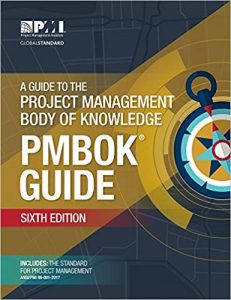
Should I use PMBOK PDF in my PMP Preparation?
PMBOK is the main reference guide for the preparation of PMP certification. However, many aspirants find it tough to read. It is not easy to follow. But it is the foundation of PMP certification training material used across the globe.
PMBOK PDF Guide is an exhaustive book. But it is written in such a way that you can use this guide with the intention of using it during implementation. However, if we focus only on PMP certification then it is not mandatory to use it. However, you can attend a comprehensive PMP training or use PMBOK PDF in combination with other PMP Prep books designed to prepare you for the PMP certification exam.
Salient Features of PMBOK PDF are:
- PMBOK is the basis for the certification exam to qualify for Project Management Professional i.e. PMP Certification
- It is a collection of best practices, standards, and procedure for project management
- Experts consider this PMBOK PDF as a bible for project managers
- PMBOK guide offers extensive coverage of project management knowledge areas, process groups, inputs, and outputs, tools, and techniques.
- It can act as a reference manual for project managers who wish to learn various tools and techniques
- PMI originally published PMBOK in 1996.
- Currently, the latest version is the PMBOK 6th edition. PMI released this version in September 2017
- Every 3 to 5 years, PMI releases a new version.
- This book is prepared by many experts across the globe
- An individual can learn and gain an understanding of individual topics in depth. Owing to the fact that knowledge areas can be treated in isolation from one another in PMBOK PDF.
Cons of PMBOK PDF:
- This book lacks clarity and readability
- PMBOK PDF Guide is descriptive which means it describes project management techniques, processes inputs, and outputs, knowledge areas. But it doesn’t describe how they should be used.
- PMBOK PDF guide is just like a reference book
- It doesn’t describe tools and techniques in detail.
- PMBOK PDF guide doesn’t have any tips and tricks to prepare for PMP exam
- This guide doesn’t have sample questions to practice at the end of each chapter
The best way to study the PMBOK to prepare for the PMP exam is to read each chapter thoroughly from PMBOK PDF and then go through the same chapter from another preparation book. Also, you should practice sample questions simultaneously. Once you thoroughly read the entire book, then practice multiple PMP simulation exams from different sources to check your readiness level.
Can I get PMBOK PDF for Free?
PMBOK PDF is a licensed file for individual use. If you have paid for PMI membership during application for the PMP exam and you are a PMI member then you do not pay any extra amount and can access and download PMBOK PDF for free.
PMI prohibits any form of distribution of PMBOK Guide. It is purely for personal education purposes. At the time of the release of the 6th edition of PMBOK PDF, PMI has completely prohibited any form of printing of this guide.
Since the launch of PMBOK 6th edition, the PMBOK PDF Guide includes a complimentary copy of the Agile Practice Guide. It is appended to end of same PMBOK PDF file that you will download for PMBOK 6th Edition.
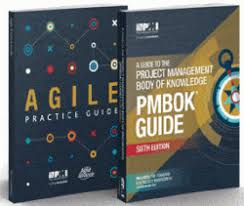
For downloading the PMBOK Guide you should follow these steps:
1. Login to PMI site using username and password
2. Search for “PMBOK 6th Edition Download” page
3. You will see the message as “A complimentary PDF download of this standard is available to PMI members”
4. Select language and click “Download” button to get the actual download page
5. On the Download page, Enter your password and click ‘Download’. When prompted, select “Save” to save the PMBOK PDF to your desktop
6. Now you have the PDF watermarked with your name, member ID and it is password protected. PMI gives this licensed copy to you as a member benefit, not for sale, distribution or reproduction
7. Every time, you will open PMBOK PDF, it will prompt for PMI (www.pmi.org) login password.
Summary – PMBOK PDF in PMP Journey
PMBOK PDF Guide plays a vital role in the preparation for the PMP exam. It is the basis of the certification exam to qualify for PMP certification. Further, this is considered to be a bible for the PMP exam. PMI published PMBOK PDF Guide in the year 1996. Every 3-5 years, PMI releases a new version based on the Role Delineation Study (RDS). The current version in PMP exam preparation is the PMBOK 6th edition. PMI released this version in September 2017.
As the PMP exam is changing on 1st July 2020 so PMBOK 6th edition will remain applicable for the upcoming PMP exam change in July 2020. Moreover, PMI members can download the PMBOK PDF guide for free. PMBOK Guide is an exhaustive book. So it is not easy to follow. Hence, the recommendation is to use it along with some preparation books to prepare for your PMP exam.

